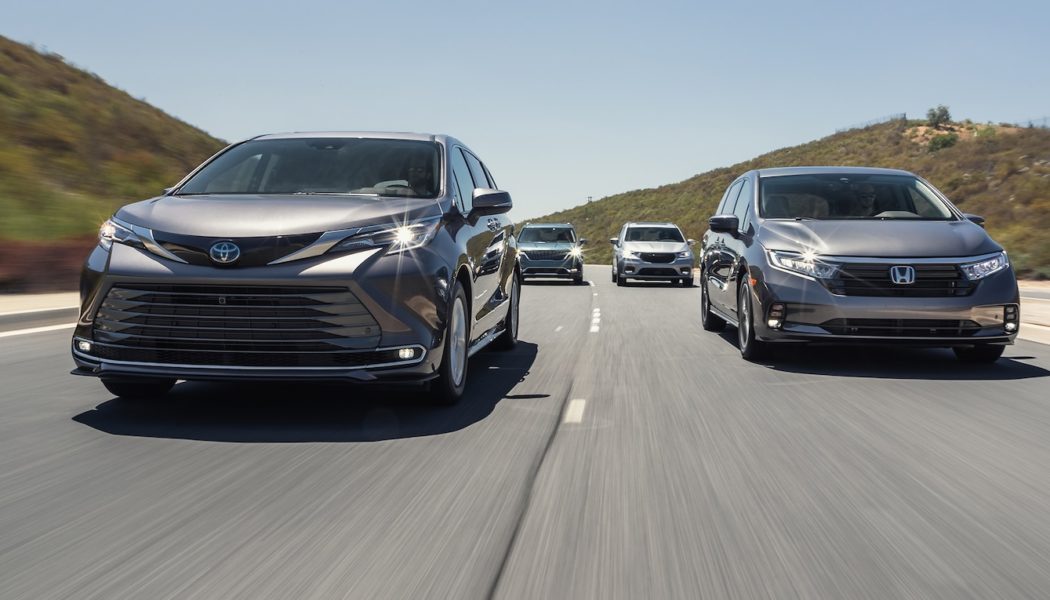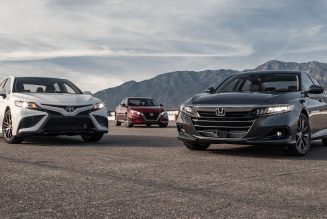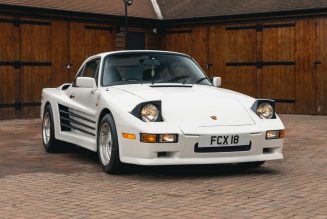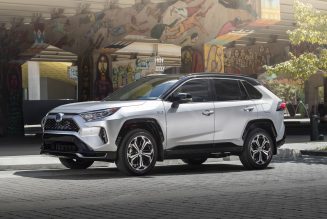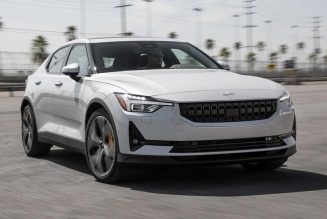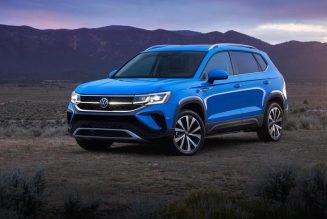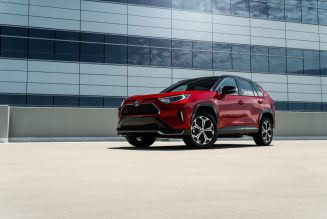From the 1980s through the late ’90s, families and minivans went together like ketchup and French fries. That was certainly the case among my friends’ families, all of whom drove around Mexico City in white Ford Windstars. Our own green Windstar was easier to spot in our school’s pickup/drop-off line, but its sliding door, spacious interior, and carlike ride were no less perfect for our usual carpool of six. Prior to that van, we had a red Windstar and a white Chrysler Voyager, but those ended up being stolen. See, we told you minivans were popular.
But the rise of two-box crossovers and SUVs led to the stigmatization of minivans as an unfashionable mom-mobiles despite off-the-charts versatility and convenience. And just like that, these carefully packaged, thoughtfully designed vehicles were replaced by less practical and less adaptable three-row SUVs.
Today’s minivans go all out in terms of technology and features in an attempt to swing the pendulum back. We gathered the fanciest, top-trim versions of the entire segment—including the newest kid on the block, the Kia Carnival—plus three dads (Dr. Bob Cho, chief of staff at Shriners for Children Medical Center in Pasadena; MotorTrend head of editorial Ed Loh; and senior features editor Jonny Lieberman) and yours truly, a single 32-year-old with vast experience living with and driving such vehicles, to see which modern, luxury-leaning minivan reigns supreme.
Four Vans Enter, One Van Leaves
As mentioned, every minivan available in America was represented. First up was a 2021 Chrysler Pacifica S Limited AWD with black wheels and badging. Our Pacifica came loaded with Stow ‘N Go second-row seats, dual rear screens, and the Stow ‘N Vac onboard vacuum cleaner to keep things tidy. Its eye-watering price—$56,090—made it the most expensive of the group. (The Voyager is Chrysler’s lower-priced model, but it’s simply a decontented Pacifica by another name.)
Our 2021 Honda Odyssey Elite didn’t necessarily match some of the other vans’ wow features, but it’s a longtime top choice in the segment. One of its key tricks is CabinWatch, which displays a live camera feed of the rear seats on the infotainment screen so you can keep an eye on the kiddos at all times. At $49,390, our Odyssey included a (temporarily on hiatus) vacuum cleaner and a rear entertainment package.
The all-new (and new to America) 2022 Kia Carnival replaces the Sedona and arrives specifically to challenge perceptions. The boxy, SUV-like styling is intended to look mature and upscale—and, crucially, less vanlike—and in this high-level SX Prestige spec, its interior feels more Mercedes than minivan. The SX Prestige’s standard (and unavailable on other trims) second-row VIP recliners do a decent impression of first-class airplane seats, and its dual rear entertainment screens with Baby Shark branding make it a favorite of young kids. The $47,770 asked for the tip-top trim in our test gives it a serious leg up on value, too.
Finally, there’s the 2021 Toyota Sienna, which was overhauled this year as a hybrid-only entry. It’s rated for 36 mpg on the highway even with all-wheel drive, and the front seats flank a highly practical center console that both opens up the cabin and increases storage options. Our example was a Limited with a $54,138 price tag.
Comfort, Entertainment, and More
Besides the usual apps, the Carnival’s rear entertainment feels as up to date as the streaming stick in your house, and it offers Netflix, YouTube, and Twitch options, plus wireless device mirroring via Apple CarPlay or Android Auto. We also like the handy power seat controls on the front passenger seat back, which make more room in a pinch (so long as the seat’s occupant is amenable). It lacks some of the clever storage solutions of some of the other vans—its center console doesn’t transform or fit a purse—but its cubbies and cupholders are all right where you expect and plentiful besides.
The Pacifica’s optional rear screens come with a Blu-ray player and have handy, easily accessible USB and HDMI ports. Even so, we’d skip the $2,495 package and put that money toward an in-vehicle Wi-Fi subscription and a couple of tablets. For those with the latest personal electronics, Pacifica offers USB-C outlets, as does the Sienna.
The Honda and Toyota have just one rear screen each, potentially problematic for multikid families even with their split-screen functions. The Odyssey’s has a couple of built-in games and such, but the Sienna’s only plays media connected to its HDMI port.
Given the luxury/empty-nest vibe of these pricey vans, we loved the Carnival SX Prestige’s VIP seats, which slide back, recline, and include fold-out ottomans, and which also move sideways to ease third-row access through a widened middle aisle. “They’re heated and ventilated and would be great for long trips with the family,” Cho observed after attempting to take a nap. They don’t move forward enough to allow adults third-row ingress, but any kid you’d stuff in the back can slither through the gap—or between the seats—no problem. If you’ll use the third row with frequency, though, lesser Carnivals offer normal captain’s chairs or a bench with a central section that can become a table.
Toyota’s second-row seats are similarly luxurious, albeit without power adjustment (good in terms of speed) or built-in footrests. “Tons of legroom in the second row,” Loh said. “Good seat comfort overall, and in the first row, too. Third-row access isn’t difficult once you figure out where the levers are. What’s missing is a ceiling-mounted camera to keep a close eye on kids. All the other minivans had one.”
The Pacifica’s second-row Stow ‘N Go seats easily stash in floor cubbies to help you haul huge items—or make a limolike rear seat—but the trade-off is thin, less comfortable seat cushions and the inability to slide forward or aft. In addition, “the front seats are uncomfortable, with the upper back jutting out farther than the lower section,” Lieberman said.
The Odyssey has tons of legroom and headroom everywhere, and its cushy second-row seats can slide forward, back, and sideways. “Access to the third row is the easiest thanks to this flexibility,” Cho said. “Great for, say, grandparents who may have arthritic joints.”
The Chrysler has the best infotainment setup; its Uconnect system is intuitive, has crisp graphics, and supports wireless Apple CarPlay. The Carnival’s gorgeous, Mercedes-like pair of screens made jaws drop, and its software is only slightly less user-friendly than the Pacifica’s. Honda and Toyota have fallen behind in this game; neither infotainment setup is as advanced in terms of the screens, graphics, or user experience. And the Sienna’s backup camera suffers from extremely poor resolution. “The Chrysler’s feels 4K, but the Sienna’s feels VGA,” Loh said.
Which One Drives the Best?
Minivans aren’t known for being enjoyable to drive, but a responsive, predictable vehicle can instill confidence behind the wheel—important when you want to keep your brood safe. During our drive loops on the Palos Verdes Peninsula, we applauded the Pacifica for its pleasant driving experience. “Good steering, handling, and brakes were engineered into the Pacifica,” Lieberman said. “Hats off for that.” Cho described the driving experience as closer to a car than a van and noted the nimble and agile dynamics.
The Honda’s ride is a little more jittery than the Pacifica’s, but its engine and transmission form a formidable and smooth-working team—even though the Chrysler felt the quickest on the road, the Odyssey actually came out on top in our straight-line acceleration tests. Honda engineers also paid close attention to steering quality and linearity, which Loh described as “just about perfect.”
The Carnival’s smooth-riding suspension is on the soft side, imparting more body motion in corners than we’d generally prefer. Acceleration is adequate, but the transmission isn’t as quick to shift or select the proper gear as the Odyssey’s. Still, the Kia’s laid-back nature and more luxurious cabin combine for a relaxing, upscale experience.
Everyone agreed the Sienna’s brake pedal was numb and difficult to acclimate to, and that its engine is too noisy with even light pedal applications. Cho and Lieberman decried the Sienna’s disconnected feel and that its various chassis elements do their work in isolation, not harmony. Loh, however, lauded its 35-mpg combined EPA rating. “The powertrain is refined enough for those willing to suffer some noise for far superior fuel economy,” he said.
Which Is the Safest Minivan?
Even when they’re loaded up like our quartet, minivans are still family vehicles, so excellent safety technology and ratings are critical. The Honda and Toyota include suites of safety tech, as is the case across their respective lineups. Honda Sensing and Toyota Safety Sense include features such as automatic emergency braking, lane keep assist, and adaptive cruise control. These items, as well as superior headlights and outstanding crash tests, helped the Odyssey and Sienna score the IIHS’ coveted 2021 Top Safety Pick+ award.
The Pacifica also offers myriad safety features, but unlike the Sienna and Odyssey, the 2021 Pacifica hasn’t been tested by the IIHS. The 2020 model received the 2019 Top Safety Pick award, but only those models with optional crash mitigation technology and specific headlights. On our drive, we disliked how some safety settings are buried deep in the infotainment menu, while others are controlled by physical buttons on the center stack.
The IIHS hasn’t tested the Carnival yet, as it’s only been out for a couple of months. However, its long list of standard safety features includes lane keep assist and automatic emergency braking. Adaptive cruise control and a blind-spot camera that shows the adjacent lanes in the instrument cluster are available in higher trims such as our SX Prestige. For its part, Kia anticipates a Top Safety Pick award.
OK, Which One Should I Buy?
Across its entire lineup, but especially in this four-van shootout, the Kia Carnival makes an extremely strong argument in terms of value. “It feels like the most expensive van in the test, but it’s actually the most affordable.” Loh said. The Odyssey and Sienna also make good cases for themselves with flexible storage and clever packaging, but in their top-spec trims, they simply feel dated and less modern and feature-rich. The Pacifica is a letdown in terms of value; it may drive the best among the bunch, but its disappointing interior materials don’t justify its price.
| 5-Year Cost of Ownership Breakdown | 2021 Chrysler Pacifica S Limited AWD | 2021 Honda Odyssey Elite | 2022 Kia Carnival (SX Prestige)* | 2021 Toyota Sienna Platinum Hybrid AWD |
| AVG STATE FEES | $1,334 | $1,260 | $1,185 | $1,335 |
| DEPRECIATION | $32,099 (57%) | $23,794 (49%) | $25,633 (56%) | $26,137 (47%) |
| FINANCING | $5,633 | $4,886 | $4,541 | $5,489 |
| INSURANCE | $7,409 | $6,911 | $7,394 | $8,216 |
| FUEL | $8,554 | $7,645 | $8,498 | $5,056 |
| MAINTENANCE | $2,651 | $2,875 | $2,605 | $2,356 |
| REPAIRS | $873 | $683 | $186 | $694 |
| TOTAL 5-YEAR COST OF OWNERSHIP | $58,553 | $48,054 | $50,043 | $49,283 |
| INTELLICHOICE Target Purchase Price | $56,546 | $49,031 | $45,582 | $55,094 |
| *Kia Carnival information unavailable at this time; data is for 2021 Kia Sedona | ||||
“There are very few outright flaws in the Sienna,” Loh said, “and it has considerable engineering and efficiency advantages.” Still, the hybrid powertrain and smartly designed cabin weren’t enough to slot it above the other three vans. Its numb brake feel, loud powertrain, and dated technology sealed its fate.
The Pacifica came in third. Its high price and cost of ownership didn’t help, especially against the Kia’s superior style, quality, and technology, but the Chrysler’s versatility, connectivity, and dynamics helped it edge out the Toyota. “If AWD and cargo flexibility are important to you, this car is probably the winner,” Cho said.
The Odyssey scored second place. It does so many things right—its storage areas and cupholders are plentiful and easy to access, and its interior is roomy enough that you won’t hear complaints from kids, parents, or grandparents. “The Odyssey may not be as stylish as the Carnival,” Loh said, “or quite as nice to drive as the Pacifica, or have a whiz-bang hybrid system like the Sienna, but everything functions seamlessly.”
That puts the new Kia Carnival in the winner’s circle. Yes, the Carnival has its flaws, but it’s simply too good in too many areas to deny. It has most of the features you and passengers of all ages could want at a highly attractive price. Even after a couple weeks of schlepping around after this comparison test, the Kia was the van we—and most important, our family members—most wanted to be in.
Although one van clearly stands out among this fully loaded foursome, there’s little doubt today’s models are the best ever, and we’d be eager to repeat this test with lesser versions that sit more at the heart of the minivan market. French fries and ketchup remain a go-to combination, and here’s hoping families and vans become a classic combo once again.
4th Place: Toyota Sienna
Pros: Standard hybrid powertrain, EPA-rated 35 mpg combined with AWD, practical center console.
Cons: Engine noise, looks sportier than it is, dated-feeling infotainment system.
Verdict: Amazing fuel economy and good storage, but poor brake pedal feel and lack of family-friendly features relegate it to this spot.
3rd Place: Chrysler Pacifica
Pros: Good handling for the class, Stow ‘N Go flexibility, high-res and easy-to-use infotainment system.
Cons: Lackluster interior material choices, the priciest, few showstopper features.
Verdict: The driver’s choice, but its eye-popping MSRP and segment-trailing materials mean this former segment leader has been passed by the competition.
2nd Place: Honda Odyssey
Pros: Quickest in the test, has hill-friendly shift paddles, best third-row access.
Cons: Outdated infotainment setup, front-drive only, third row somewhat difficult to raise and lower.
Verdict: A really good all-rounder, surpassed only by the greatness of our winner.
1st Place: Kia Carnival
Pros: Incredible value, long list of thoughtful features for the whole family, upscale styling.
Cons: VIP seats don’t move for people and cargo, no available hybrid or AWD, ride is a little too plush.
Verdict: Big value, tons of comfort, attractive looks, modern tech—the list goes on. The Carnival shakes up the segment.
| POWERTRAIN/CHASSIS | 2021 Chrysler Pacifica S Limited AWD | 2021 Honda Odyssey Elite | 2022 Kia Carnival (SX Prestige) | 2021 Toyota Sienna Platinum Hybrid AWD |
| DRIVETRAIN LAYOUT | Front-engine, AWD | Front-engine, FWD | Front-engine, FWD | Front-engine, AWD |
| ENGINE TYPE | 60-deg V-6, alum block/heads | 60-deg V-6, alum block/heads | 60-deg V-6, alum block/heads | I-4, alum block/head, plus rear permanent-magnet electric motor |
| VALVETRAIN | DOHC, 4 valves/cyl | SOHC, 4 valves/cyl | DOHC, 4 valves/cyl | DOHC, 4 valves/cyl |
| DISPLACEMENT | 220.0 cu in/3,605 cc | 211.8 cu in/3,471 cc | 211.8 cu in/3,470 cc | 151.8 cu in/2,478 cc |
| COMPRESSION RATIO | 11.3:1 | 11.5:1 | 12.3:1 | 14.0:1 |
| POWER (SAE NET) | 287 hp @ 6,400 rpm | 280 hp @ 6,000 rpm | 290 hp @ 6,400 rpm | 189 hp @ 6,000 rpm (gas), 180 hp (elec), 245 hp (comb) |
| TORQUE (SAE NET) | 262 lb-ft @ 4,000 rpm | 262 lb-ft @ 4,700 rpm | 262 lb-ft @ 5,000 rpm | 176 lb-ft @ 4,400 rpm (gas), 199 lb-ft (elec) |
| REDLINE | 6,400 rpm | 6,800 rpm | 6,750 rpm | Not indicated |
| WEIGHT TO POWER | 17.2 lb/hp | 16.2 lb/hp | 16.4 lb/hp | 19.5 lb/hp |
| TRANSMISSION | 9-speed automatic | 10-speed automatic | 8-speed automatic | Cont variable auto |
| AXLE/FINAL-DRIVE RATIO | 3.73:1/1.79:1 | 3.61:1/1.87:1 | 3.51:1/2.27:1 | NA |
| SUSPENSION, FRONT; REAR | Struts, coil springs, anti-roll bar; torsion beam, coil springs, anti-roll bar | Struts, coil springs, anti-roll bar; multilink, coil springs, anti-roll bar | Struts, coil springs, anti-roll bar; multilink, coil springs, anti-roll bar | Struts, coil springs, anti-roll bar; multilink, coil springs, anti-roll bar |
| STEERING RATIO | 15.7:1 | 14.4:1 | 14.2:1 | 14.3:1 |
| TURNS LOCK-TO-LOCK | 3.0 | 3.0 | 3.0 | 3.0 |
| BRAKES, F; R | 13.8-in vented disc; 13.4-in disc, ABS | 12.6-in vented disc; 13.0-in disc, ABS | 12.8-in vented disc; 12.8-in disc, ABS | 12.9-in vented disc; 12.5-in vented disc, ABS |
| WHEELS | 7.5 x 20-in cast aluminum | 7.5 x 19-in cast aluminum | 7.5 x 19-in cast aluminum | 7.5 x 18-in cast aluminum |
| TIRES | 245/50R20 102V Falken Ziex CT50 A/S (M+S) | 235/55R19 101H Bridgestone Turanza EL440 (M+S) | 235/55R19 101H Continental CrossContact RX (M+S) | 235/60R18 102V Bridgestone Turanza LS100 (M+S) |
| DIMENSIONS | ||||
| WHEELBASE | 121.6 in | 118.1 in | 121.7 in | 120.5 in |
| TRACK, F/R | 68.8/68.8 in | 67.3/67.2 in | 68.5/68.5 in | 67.7/68.5 in |
| LENGTH x WIDTH x HEIGHT | 204.3 x 79.6 x 70.7 in | 205.2 x 78.5 x 69.6 in | 203.0 x 78.5 x 68.5 in | 203.7 x 78.5 x 68.5 in |
| TURNING CIRCLE | 40.2 ft | 39.6 ft | 38.0 ft | 38.3 ft |
| CURB WEIGHT | 4,935 lb | 4,541 lb | 4,759 lb | 4,781 lb |
| WEIGHT DIST, F/R | 56/44% | 55/45% | 55/45% | 53/47% |
| TOWING CAPACITY | 3,600 lb | 3,500 lb | 3,500 lb | 3,500 lb |
| SEATING CAPACITY | 7 | 8 | 7 | 7 |
| HEADROOM, F/M/R | 38.4/38.0/38.7 in | 38.7/39.2/38.3 in | 39.7/37.6/36.5 in | 40.1/39.3/37.4 in |
| LEGROOM, F/M/R | 41.1/39.0/36.5 in | 40.9/40.9/38.1 in | 41.1/40.5/35.6 in | 40.3/39.9/38.7 in |
| SHOULDER ROOM, F/M/R | 63.8/63.0/61.2 in | 63.1/61.6/60.0 in | 64.2/63.2/59.5 in | 62.4/62.7/58.5 in |
| CARGO VOLUME, BEH F/M/R | 140.5/87.5/32.2 cu ft | 140.7/91.0/38.6 cu ft | —/86.9/40.2/cu ft | 101.0/75.2/33.5 cu ft |
| TEST DATA | ||||
| ACCELERATION TO MPH | ||||
| 0-30 | 2.5 sec | 2.6 sec | 2.7 sec | 2.4 sec |
| 0-40 | 4.0 | 3.7 | 4.0 | 3.8 |
| 0-50 | 5.6 | 5.2 | 5.5 | 5.5 |
| 0-60 | 7.8 | 6.7 | 7.5 | 7.6 |
| 0-70 | 10.3 | 8.7 | 9.7 | 10.1 |
| 0-80 | 13.3 | 11.1 | 12.1 | 13.0 |
| 0-90 | 17.2 | 13.8 | 15.4 | 16.6 |
| PASSING, 45-65 MPH | 4.2 | 3.3 | 3.9 | 4.1 |
| QUARTER MILE | 16.0 sec @ 87.1 mph | 15.2 sec @ 94.5 mph | 15.7 sec @ 90.7 mph | 15.8 sec @ 87.8 mph |
| BRAKING, 60-0 MPH | 122 ft | 123 ft | 118 ft | 125 ft |
| LATERAL ACCELERATION | 0.78 g (avg) | 0.75 g (avg) | 0.80 g (avg) | 0.82 g (avg) |
| MT FIGURE EIGHT | 28.0 sec @ 0.58 g (avg) | 29.1 sec @ 0.56 g (avg) | 27.9 sec @ 0.60 g (avg) | 28.2 sec @ 0.59 g (avg) |
| TOP-GEAR REVS @ 60 MPH | 1,500 rpm | 1,500 rpm | 1,600 rpm | NA rpm |
| CONSUMER INFO | ||||
| BASE PRICE | $50,705 | $48,995 | $47,275 | $51,635 |
| PRICE AS TESTED | $56,090 | $49,390 | $47,770 | $54,138 |
| AIRBAGS | 8: Dual front, front side, f/m/r curtain, front knee | 8: Dual front, front side, f/m/r curtain, front knee | 6: Dual front, front side, f/m/r curtain | 10: Dual front, front side, middle side, f/m/r curtain, driver knee, passenger thigh |
| BASIC WARRANTY | 3 yrs/36,000 miles | 3 yrs/36,000 miles | 5 yrs/60,000 miles | 3 yrs/36,000 miles |
| POWERTRAIN WARRANTY | 5 yrs/60,000 miles | 5 yrs/60,000 miles | 10 yrs/100,000 miles | 5 yrs/60,000 miles* |
| ROADSIDE ASSISTANCE | 5 yrs/100,000 miles | 3 yrs/36,000 miles | 5 yrs/60,000 miles | 2 yrs/unlimited miles |
| FUEL CAPACITY | 19.0 gal | 19.5 gal | 19.0 gal | 18.0 gal + 1.9 kWh Ni-MH battery |
| EPA CITY/HWY/COMB ECON | 17/25/20 mpg | 19/28/22 mpg | 19/26/22 mpg | 35/36/35 mpg |
| ENERGY CONS, CITY/HWY | 198/135 kWh/100 miles | 177/120 kWh/100 miles | 177/130 kWh/100 miles | 96/94 kWh/100 miles |
| CO2 EMISSIONS, COMB | 0.98 lb/mile | 0.87 lb/mile | 0.90 lb/mile | 0.55 lb/mile |
| RECOMMENDED FUEL | Unleaded regular | Unleaded regular | Unleaded regular | Unleaded regular |
| *Hybrid system coverage extends to 8 yrs/100,000 miles, hybrid battery coverage to 10 yrs/150,000 miles |
